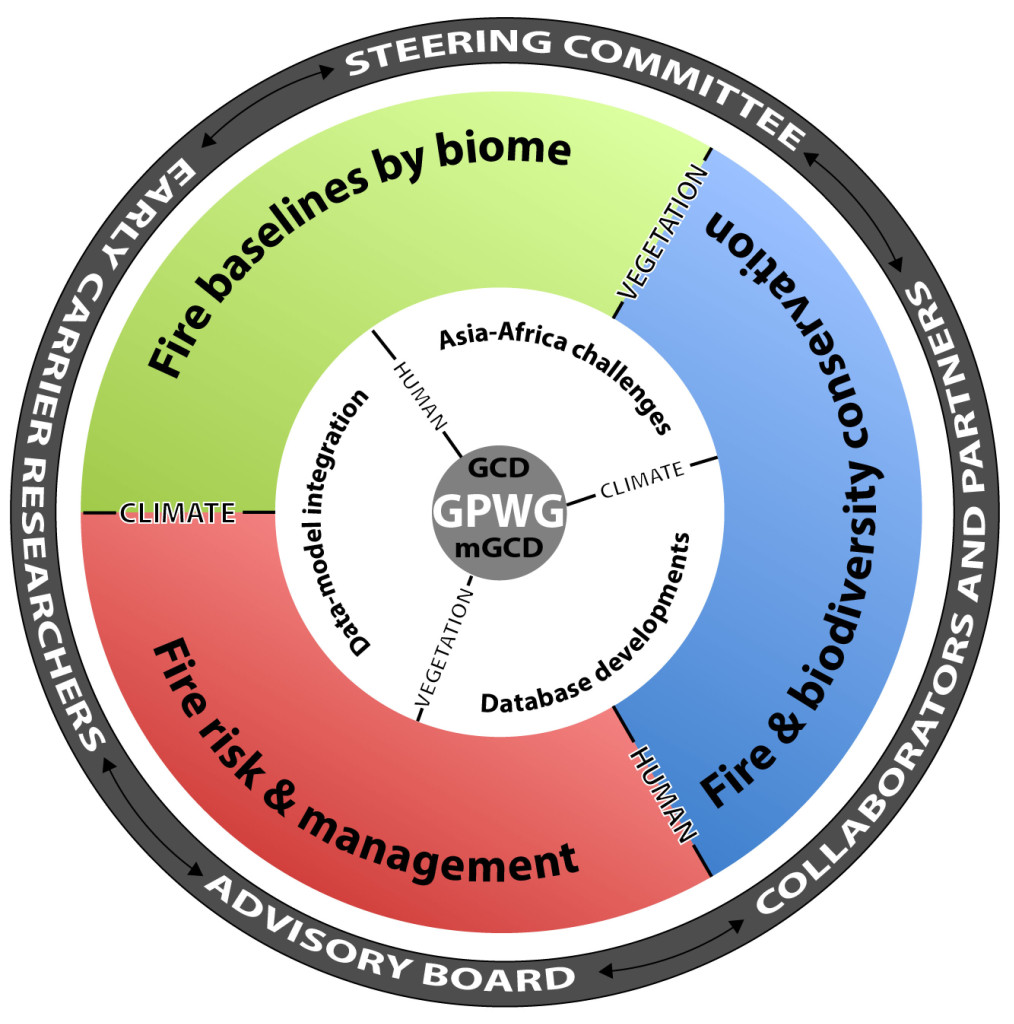from sediment charcoal records to improve data-model comparisons
New publication: Marlon, J. R., Kelly, R., Daniau, A.-L., Vannière, B., Power, M. J., Bartlein, P., Higuera, P., Blarquez, O., Brewer, S., Brücher, T., Feurdean, A., Gil-Romera, G., Iglesias, V., Maezumi, S. Y., Magi, B., Mustaphi, C. J. C., and Zhihai, T.: Reconstructions of biomass burning from sediment charcoal records to improve data-model comparisons, Biogeosciences Discussions., 12, 18571-18623, doi:10.5194/bgd-12-18571-2015, 2015.
General objectives
In the past decade, the Global Paleofire Working Group (GPWG) developed and analysed fire history records using the Global Charcoal Database (GCD), which advanced our understanding of the controls and impacts of fire in the Earth system on a wide range of spatial and temporal scales. The GPWG2 will meet the growing needs of interdisciplinary fire scientists and practitioners by developing research projects, in collaboration with stakeholders, that employ diverse data sources, a new open-access database, statistical tools, and state-of-the-art models to address questions about fire-regime variations and their feedbacks on species, ecosystems, and climate.
GPWG2 activities are organized into three Focus Groups (FG) and four Crosscutting Initiatives (CI), including a geographical challenge and early carrier researcher (ECR) project.
Focus Groups form the basis of the GPWG2 thematic research priorities:
- Fire baselines by biome
- Fire risk & management
- Fire & biodiversity conservation
Crosscutting Initiatives represent the background activities of the GPWG and serve as the strategic instruments of the Focus Groups:
- Asian & Africa paleofire challenge: an outreach and research initiative to support capacity building and research in these regions;
- Synthesis & database development;
- Paleofire data-model integration and links with other databases;
- The modern Global Charcoal Database (mGCD), an innovative project to develop a “bottom up” approach to fire proxy calibration, launched during the last GPWG workshop (Harvard Forest, October 2015).
